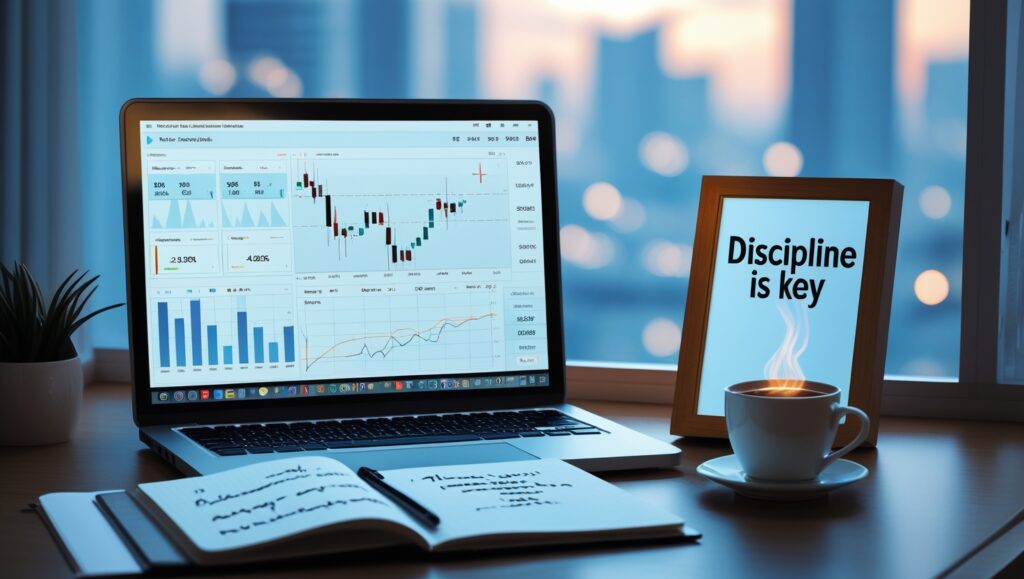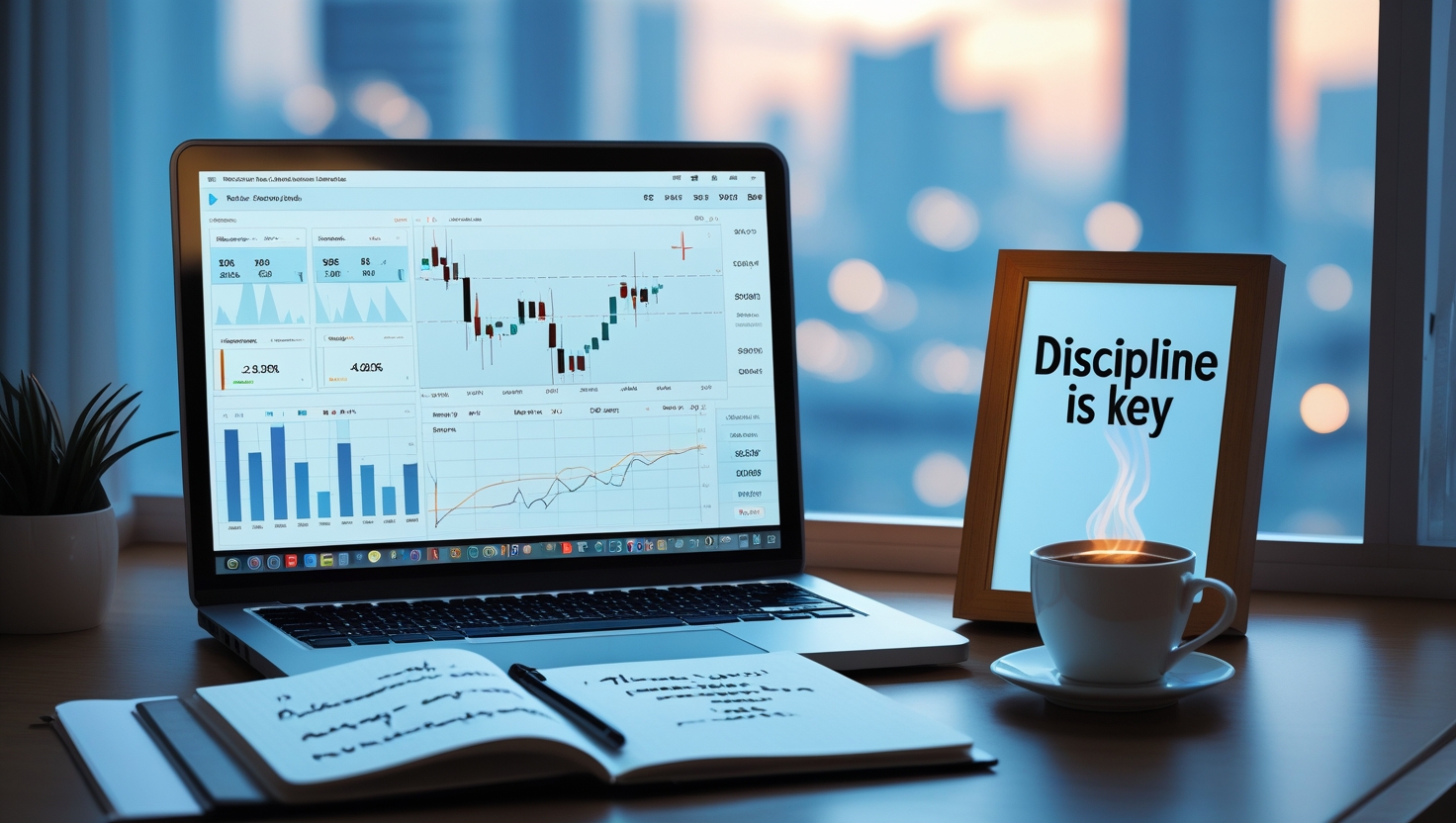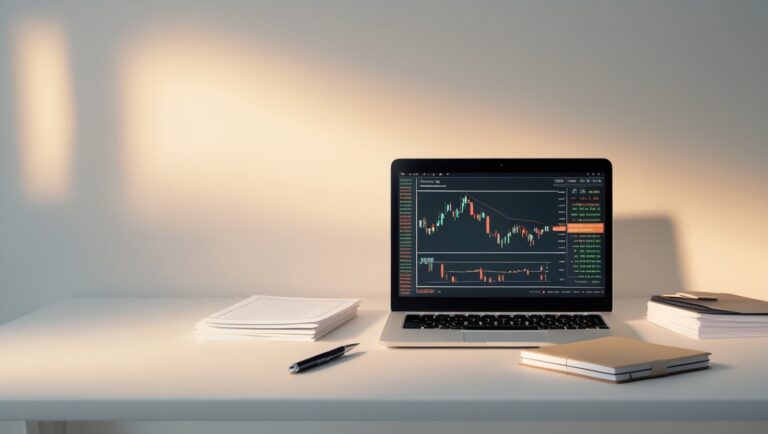Best Stock Trading Routine for New Traders With Small Accounts
Best Stock Trading Routine for New Traders With Small Accounts
When I first started trading with a small account, I made the mistake of thinking I had to do more to make more. I’d jump into any stock that moved, trade all day, and end up with more red days than green ones. What I didn’t know back then was that a simple, repeatable trading routine could change everything — and it did.
Now I follow a daily routine that works even with a small account, and I only trade a few times a week. I’m not glued to my screen, I don’t use complex indicators, and I don’t need a huge amount of money to make consistent progress. This exact process is what I break down inside my ebook, where I explain how I use simple stock setups to help me cover my monthly bills.

Table of Contents
Start With Structure
Every good routine starts before the market opens. I wake up early and go through the same steps every morning:
- I scan for volume movers
- Check for news or catalysts
- Mark support/resistance zones
- Narrow down my watchlist to 5 or 6 stocks
This helps me avoid distractions. I’m not chasing anything. I already know what I’m looking for — and I wait for it to come to me.
Focus on Quality, Not Quantity
When trading with a small account, every trade matters. That’s why I only go after clean setups that give me a clear entry and manageable risk. I’m not trying to get rich overnight. I’m trying to grow with consistency.
I don’t need ten trades a day. I often take just two or three trades a week, and that’s enough. It keeps me focused, calm, and sharp.
Use Free Tools That Work
You don’t need expensive platforms to trade well. I built my entire process using free tools, and I list my favorites in my ebook here. All I use are basic scanners, charts, and a notepad to track my thoughts and results.
Trading isn’t about having the fanciest setup — it’s about having the right mindset and process.
Trade a Specific Time of Day
I don’t trade all day. In fact, most of my trades happen between 9:40AM and 10:30AM. That’s when the market gives the best moves with volume and volatility. After that, I usually step away unless something truly clean shows up.
Knowing when not to trade is just as important as knowing when to trade.
Stick to One Setup Until It Works
One of the biggest mistakes I made early on was bouncing between strategies. I’d try breakouts one week, then dip buys, then scalps — and wonder why I wasn’t getting consistent results.
Now, I focus on just one or two setups that I’ve tested and tracked. That’s how I built confidence — and profitability.
Final Thoughts
If you’re a new trader with a small account, the best thing you can do is create a routine that works for you — one that removes noise, builds confidence, and protects your capital. You don’t need to trade like a hedge fund. You just need to trade with purpose.
Inside my ebook, I walk through how I built a simple process that helps me pick stocks, avoid emotional trades, and grow consistently month after month. It’s built for real life — not for hype.
You can trade well without a big account — you just need a routine that works.
One of the best things I ever did for my trading journey was eliminate the noise. I stopped following dozens of traders, alerts, and strategies. Instead, I created a daily system that helps me filter what actually matters. If you’re trading with a small account, this kind of focus is critical.
With limited capital, every decision counts. I used to overtrade and waste money on commissions, slippage, or setups that didn’t deserve my attention. Now, I respect my account size by only taking trades that meet specific criteria — which I outline fully inside my ebook.
A big part of my success came from consistency. I wake up at the same time, do the same scans, and follow the same checklist each day. This removes guesswork. I’m not reacting — I’m executing a plan. That shift in mindset helped me start seeing real results.
I don’t trade mid-day anymore. That’s when most chop and fakeouts happen. With a small account, I can’t afford to take random trades. I protect my capital by only trading when there’s volume, momentum, and a clean setup.
I also avoid after-hours and premarket trading. It’s tempting, but the spreads are wide and moves are unpredictable. As a small trader, I’ve learned to stay in the highest-probability zones — which are usually during regular market hours.
Risk management is everything. I personally never risk more than 2% of my account on a single trade. Sometimes even less. I’d rather take small wins and stay in the game than blow up chasing something I didn’t plan for. That’s a mistake I made early on, and I’m not repeating it.
Journaling made a big difference. I write down what worked, what didn’t, and how I felt during each trade. Over time, this helped me eliminate patterns that were costing me money. I now know exactly what setups give me the best chance of winning.
Trading is 80% psychology and 20% execution. When I simplified my routine, my stress dropped. I was no longer chasing alerts or switching strategies. I was calm, selective, and patient. And when you’re trading with a small account, that mental clarity is everything.
I also build my weekly watchlist over the weekend, when the market is closed. I scan for setups with recent news, volume, and price action. This gives me a head start every Monday — and a structure to follow all week.
I don’t hold trades overnight unless it’s part of my plan. With a small account, overnight gaps can destroy progress. I prefer to day trade for quick, clean wins and reset the next day.
Inside my ebook, I share how I built this exact routine — including how I find stocks before 9:30AM, the setups I look for, and how I use free tools to do it. I made this guide because I wish someone gave it to me when I started.
If you’re trading with a small account, you don’t need to overcomplicate it. You need structure, discipline, and a plan that protects your money while giving you real opportunities to grow. That’s exactly what this routine helped me do — and it can help you too.

Stay ahead in the stock market! Subscribe to our newsletter and receive exclusive stock flow reports, trading insights, and actionable tips directly in your inbox. Join thousands of traders who get our updates first.







